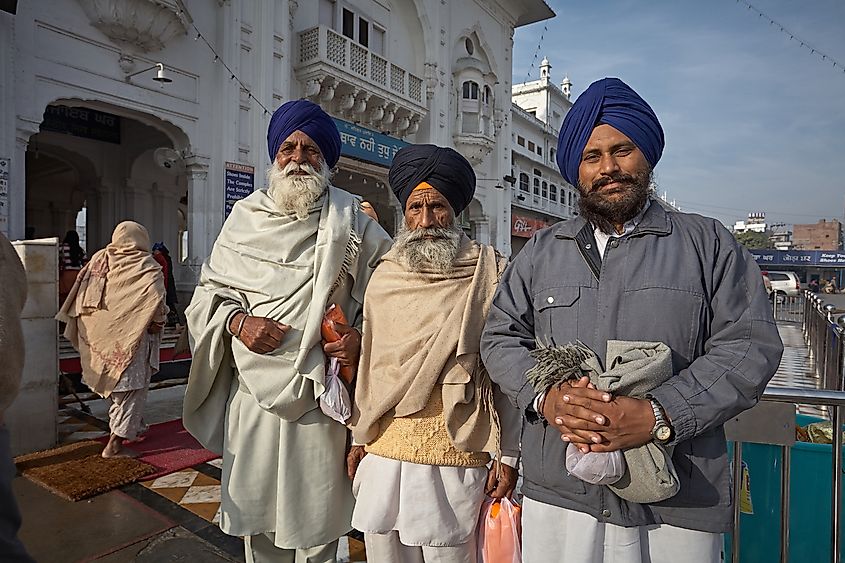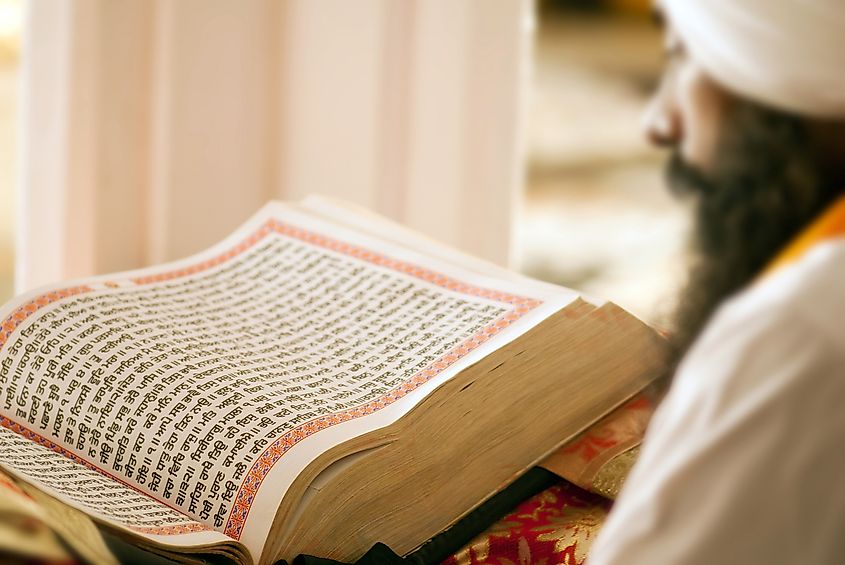What Is The Fastest Growing Religion In Australia?

- Christians form the largest religious group in Australia, but they are not the fastest growing.
- Sikhs believe that God is everywhere and all people are equals irregardless of their race, color, sex, caste, or creed.
- Christians form the world's largest religious group but Muslims are predicted to surpass them by 2060.
Australia is a diverse country that is home to people of many ethnic and religious backgrounds. In 2016, the Australian Census of Population and Housing determined that as many as three-fifths of people living in Australia ,(about 14 million people), are affiliated with some type of religion, or a spiritual practice or belief. The majority of people in Australia who follow a religion describe themselves as Christians, and the majority of these are Catholics and Anglicans. Muslims make up the largest non-Christian religious group in the country, followed by Buddhists, Hindus, Sikhs, and Jews. A small portion of people in Australia follow other spiritual practices such as Nature religions, and Australian Aboriginal beliefs. A large section of the population- about one third- describes themselves as non-religious.
It may come as a surprise to you, but the fastest growing religion in the country according to the Australia Bureau of Statistics is Sikhism. This religion experienced a 500% growth from 2006 to 2016, and is now the fifth largest religion in all of Australia. People who follow the Sikh faith often migrate to Australia in order to escape injustices they may have experienced in their home countries. The majority of Sikhs in Australia live in Greater Melbourne, and many have immigrated from countries such as Pakistan, India, Malaysia, Singapore, Fiji, Kenya, the UK, and Uganda. Sikhism is a religion with a rich history and set of beliefs.
Origin Of Sikhism

The Sikh faith can trace its roots back to about 1500 CE. Guru Nanak was the religion’s first teacher, and he began teaching Sikhism as a new religion that consisted of what he saw as the positive beliefs of the two dominant religions in the Punjab region of South Asia he inhabited, Hinduism and Islam.
Over the following centuries, a total of nine Gurus followed Nanak’s first teachings, developing the Sikh faith. These creators of the religion attempted to do away with the caste system of India and violent traditions like the burning of the widow, known as Sati. (Sati had a widow burn to death as she sat on top of her dead husband’s funeral pyre).
Beliefs
Unlike those who believe in Hinduism and Islam, those who follow Sikhism do not engage in pilgrimages, fasting, or other rituals seen as superstitious. All Sikhs are considered to be equals irregardless of their race, color, sex, caste, or creed. There is no top clergy class in this religion, but there are readers and singers in the Gurdwaras, which are the Sikh temples.
Sikhs believe that God is everywhere, and that there is just one invisible God. This group also believes in supporting community services and helping those in need. Sometimes this takes the form of militant service for others, and many Sikhs are found working in the Indian army or as part of the police. Sikhs also always have a community kitchen called Langar, which offers free food to all.
At the time of the Moghul Empire in the Punjab region, muslims were said to sometimes be fanatic in their beliefs, and are said to have harassed non-muslims, including Sikhs. In response to this, the Sikh leader Guru Gobind set out to create a group of fighting Sikhs.
Guru Gobind changed his last name to Singh, which means “lion” and asked his followers to do so as well. To this day, baptismal ceremonies name boys as Singh and girls as Kaur (princess) in Sikhism. Many Sikhs refrain from cutting their hair as a symbol of Sikh pride, and carry it in a turban. Sikhs often wear bracelets on their wrists, and carry a religious sword. Some Sikhs do not adhere to these practices of dress but still follow the religion.
Holy Books

The sacred scripture of Sikhism is called Adi Granth, which is Punjabi for “First Book”. This text is also referred to as Granth or Granth Sahib, and is a vast collection of almost 6,000 hymns written by Sikh religious leaders or Gurus, as well as medieval saints from different religions.
The first version of the Adi Granth was put together by Arjun, the 5th Sikh Guru in 1604 CE.
The hymns in the Adi Granth are arranged according to the musical modes known as “ragas” in which they are sung. These musical poems are written largely in Punjabi or Hindi, and also present words in Arabic, Persian, and Marathi. This holy book begins with a hymn about God as Truth, “Mul Mantra”.
The Adi Granth is offered the same respect as a living Guru, and is opened each morning and wrapped to be put away every evening. This book is read aloud on special occasions such as the birthdays of Gurus, which can last for days at a time.
Future Of Religion
Christianity remains a reigning religion around the world, as in Australia, but that may change in the decades to come. Sikhism may be on the rise in some places, but worldwide, according to Pew Research, Islam is set to spread twice as fast as the world’s population from 2015 to 2060. In the second half of this century, it is predicted that Muslims will surpass Christians as the world’s largest religious group. Will the world be more religious at that time or less? That remains to be seen.











